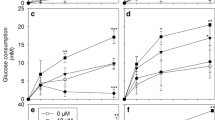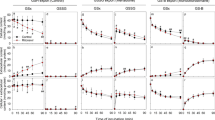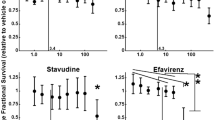Abstract
Antiretroviral protease inhibitors are a class of important drugs that are used for the treatment of human immunodeficiency virus infections. Among those compounds, ritonavir is applied frequently in combination with other antiretroviral protease inhibitors, as it has been reported to boost their therapeutic efficiency. To test whether ritonavir affects the viability and the glutathione (GSH) metabolism of brain cells, we have exposed primary astrocyte cultures to this protease inhibitor. Application of ritonavir in low micromolar concentrations did not compromise cell viability, but caused a time- and concentration-dependent loss of GSH from the cells which was accompanied by a matching increase in the extracellular GSH content. Half-maximal effects were observed for ritonavir in a concentration of 3 μM. The ritonavir-induced stimulated GSH export from astrocytes was completely prevented by MK571, an inhibitor of the multidrug resistance protein 1. In addition, continuous presence of ritonavir was essential to maintain the stimulated GSH export, since removal of ritonavir terminated the stimulated GSH export. Ritonavir was more potent to stimulate GSH export from astrocytes than the antiretroviral protease inhibitors indinavir and nelfinavir, but combinations of ritonavir with indinavir or nelfinavir did not further stimulate astrocytic GSH export compared to a treatment with ritonavir alone. The strong effects of ritonavir and other antiretroviral protease inhibitors on the GSH metabolism of astrocytes suggest that a chronic treatment of patients with such compounds may affect their brain GSH metabolism.





Similar content being viewed by others
References
Bazzoli C, Jullien V, Le Tiec C, Rey E, Mentre F, Taburet AM (2010) Intracellular pharmacokinetics of antiretroviral drugs in HIV-infected patients, and their correlation with drug action. Clin Pharmacokinet 49(1):17–45
Bartlett JA, DeMasi R, Quinn J, Moxham C, Rousseau F (2001) Overview of the effectiveness of triple combination therapy in antiretroviral-naive HIV-1 infected adults. AIDS 15(11):1369–1377
Flexner C (1998) HIV-protease inhibitors. N Eng J Med 338(18):1281–1292
Durant J, Clevenbergh P, Garraffo R, Halfon P, Icard S, Del Giudice P, Montagne N, Schapiro JM, Dellamonica P (2000) Importance of protease inhibitor plasma levels in HIV-infected patients treated with genotypic-guided therapy: pharmacological data from the Viradapt Study. AIDS 14(10):1333–1339
Klabe RM, Bacheler LT, Ala PJ, Erickson-Viitanen S, Meek JL (1998) Resistance to HIV protease inhibitors: a comparison of enzyme inhibition and antiviral potency. Biochemistry 37(24):8735–8742
Eagling VA, Back DJ, Barry MG (1997) Differential inhibition of cytochrome P450 isoforms by the protease inhibitors, ritonavir, saquinavir and indinavir. Br J Clin Pharmacol 44(2):190–194
Cooper CL, van Heeswijk RP, Gallicano K, Cameron DW (2003) A review of low-dose ritonavir in protease inhibitor combination therapy. Clin Infect Dis 36(12):1585–1592
Wensing AM, van Maarseveen NM, Nijhuis M (2010) Fifteen years of HIV protease inhibitors: raising the barrier to resistance. Antiviral Res 85(1):59–74
Ford J, Khoo SH, Back DJ (2004) The intracellular pharmacology of antiretroviral protease inhibitors. J Antimicrob Chemother 54(6):982–990
Moyle GJ, Back D (2001) Principles and practice of HIV-protease inhibitor pharmacoenhancement. HIV Med 2(2):105–113
Hirrlinger J, Dringen R (2010) The cytosolic redox state of astrocytes: maintenance, regulation and functional implications for metabolite trafficking. Brain Res Rev 63(1–2):177–188
Parpura V, Heneka MT, Montana V, Oliet SH, Schousboe A, Haydon PG, Stout RF Jr, Spray DC, Reichenbach A, Pannicke T, Pekny M, Pekna M, Zorec R, Verkhratsky A (2012) Glial cells in (patho)physiology. J Neurochem 121(1):4–27
Sofroniew MV, Vinters HV (2010) Astrocytes: biology and pathology. Acta Neuropathol 119(1):7–35
Dienel GA (2012) Brain lactate metabolism: the discoveries and the controversies. J Cereb Blood Flow Metab 32(7):1107–1138
Schmidt MM, Dringen R (2012) GSH synthesis and metabolism. In: Gruetter R, Choi IY (eds) Advances in neurobiology, vol neural metabolism in vivo. Springer, New York, pp 1029–1050
Johnson WM, Wilson-Delfosse AL, Mieyal JJ (2012) Dysregulation of glutathione homeostasis in neurodegenerative diseases. Nutrients 4(10):1399–1440
Drukarch B, Schepens E, Jongenelen CA, Stoof JC, Langeveld CH (1997) Astrocyte-mediated enhancement of neuronal survival is abolished by glutathione deficiency. Brain Res 770(1–2):123–130
Gegg ME, Clark JB (1036) Heales SJ (2005) Co-culture of neurones with glutathione deficient astrocytes leads to increased neuronal susceptibility to nitric oxide and increased glutamate–cysteine ligase activity. Brain Res 1–2:1–6
Gimenez F, Fernandez C, Mabondzo A (2004) Transport of HIV protease inhibitors through the blood–brain barrier and interactions with the efflux proteins, P-glycoprotein and multidrug resistance proteins. J Acquir Immune Defic Syndr 36(2):649–658
Anthonypillai C, Sanderson RN, Gibbs JE, Thomas SA (2004) The distribution of the HIV protease inhibitor, ritonavir, to the brain, cerebrospinal fluid, and choroid plexuses of the guinea pig. J Pharmacol Exp Ther 308(3):912–920
Hoetelmans RM, van Essenberg M, Profijt M, Meenhorst PL, Mulder JW, Beijnen JH (1998) High-performance liquid chromatographic determination of ritonavir in human plasma, cerebrospinal fluid and saliva. J Chromatogr B Biomed Sci Appl 705(1):119–126
Hsu A, Granneman GR, Bertz RJ (1998) Ritonavir. Clinical pharmacokinetics and interactions with other anti-HIV agents. Clin Pharmacokinet 35(4):275–291
Mathiisen TM, Lehre KP, Danbolt NC, Ottersen OP (2010) The perivascular astroglial sheath provides a complete covering of the brain microvessels: an electron microscopic 3D reconstruction. Glia 58(9):1094–1103
Brandmann M, Tulpule K, Schmidt MM, Dringen R (2012) The antiretroviral protease inhibitors indinavir and nelfinavir stimulate Mrp1-mediated GSH export from cultured brain astrocytes. J Neurochem 120(1):78–92
Hamprecht B, Löffler F (1985) Primary glial cultures as a model for studying hormone action. Methods Enzymol 109:341–345
Hirrlinger J, Dringen R (2005) Multidrug resistance protein 1-mediated export of glutathione and glutathione disulfide from brain astrocytes. Methods Enzymol 400:395–409
Dringen R, Kussmaul L, Hamprecht B (1998) Detoxification of exogenous hydrogen peroxide and organic hydroperoxides by cultured astroglial cells assessed by microtiter plate assay. Brain Res Protoc 2(3):223–228
Scheiber IF, Schmidt MM, Dringen R (2010) Zinc prevents the copper-induced damage of cultured astrocytes. Neurochem Int 57(3):314–322
Lowry OH, Rosebrough NJ, Farr AL, Randall RJ (1951) Protein measurement with the folin phenol reagent. J Biol Chem 193(1):265–275
Hohnholt MC, Dringen R (2011) Iron-dependent formation of reactive oxygen species and glutathione depletion after accumulation of magnetic iron oxide nanoparticles by oligodendroglial cells. J Nanopart Res 13(12):6761–6774
Minich T, Riemer J, Schulz JB, Wielinga P, Wijnholds J, Dringen R (2006) The multidrug resistance protein 1 (Mrp1), but not Mrp5, mediates export of glutathione and glutathione disulfide from brain astrocytes. J Neurochem 97(2):373–384
Hirrlinger J, Schulz JB, Dringen R (2002) Glutathione release from cultured brain cells: multidrug resistance protein 1 mediates the release of GSH from rat astroglial cells. J Neurosci Res 69(3):318–326
Kranich O, Dringen R, Sandberg M, Hamprecht B (1998) Utilization of cysteine and cysteine precursors for the synthesis of glutathione in astroglial cultures: preference for cystine. Glia 22(1):11–18
Yoshiba-Suzuki S, Sagara J, Bannai S, Makino N (2011) The dynamics of cysteine, glutathione and their disulphides in astrocyte culture medium. J Biochem 150(1):95–102
Palmeira VF, Kneipp LF, Rozental S, Alviano CS, Santos AL (2008) Beneficial effects of HIV peptidase inhibitors on fonsecaea pedrosoi: promising compounds to arrest key fungal biological processes and virulence. PLoS ONE 3(10):e3382
Chandler B, Almond L, Ford J, Owen A, Hoggard P, Khoo S, Back D (2003) The effects of protease inhibitors and nonnucleoside reverse transcriptase inhibitors on p-glycoprotein expression in peripheral blood mononuclear cells in vitro. J Acquir Immune Defic Syndr 33(5):551–556
Wang X, Chai H, Lin PH, Yao Q, Chen C (2009) Roles and mechanisms of human immunodeficiency virus protease inhibitor ritonavir and other anti-human immunodeficiency virus drugs in endothelial dysfunction of porcine pulmonary arteries and human pulmonary artery endothelial cells. Am J Pathol 174(3):771–781
Lagathu C, Eustace B, Prot M, Frantz D, Gu Y, Bastard JP, Maachi M, Azoulay S, Briggs M, Caron M, Capeau J (2007) Some HIV antiretrovirals increase oxidative stress and alter chemokine, cytokine or adiponectin production in human adipocytes and macrophages. Antivir Ther 12(4):489–500
Liddell JR, Dringen R, Crack PJ, Robinson SR (2006) Glutathione peroxidase 1 and a high cellular glutathione concentration are essential for effective organic hydroperoxide detoxification in astrocytes. Glia 54(8):873–879
Bishop GM, Dringen R, Robinson SR (2007) Zinc stimulates the production of toxic reactive oxygen species (ROS) and inhibits glutathione reductase in astrocytes. Free Radic Biol Med 42(8):1222–1230
He Z, Chen L, You J, Qin L, Chen X (2009) Antiretroviral protease inhibitors potentiate chloroquine antimalarial activity in malaria parasites by regulating intracellular glutathione metabolism. Exp Parasitol 123(2):122–127
Weakley SM, Jiang J, Lu J, Wang X, Lin PH, Yao Q, Chen C (2011) Natural antioxidant dihydroxybenzyl alcohol blocks ritonavir-induced endothelial dysfunction in porcine pulmonary arteries and human endothelial cells. Med Sci Monit 17(9):BR235–BR241
Schmidt MM, Dringen R (2009) Differential effects of iodoacetamide and iodoacetate on glycolysis and glutathione metabolism of cultured astrocytes. Front Neuroenergetics 1:1–10
Schmidt MM, Dringen R (2010) Fumaric acid diesters deprive cultured primary astrocytes rapidly of glutathione. Neurochem Int 57(4):460–467
Schmidt MM, Rohwedder A, Dringen R (2011) Effects of chlorinated acetates on the glutathione metabolism and on glycolysis of cultured astrocytes. Neurotox Res 19(4):628–637
Tulpule K, Dringen R (2011) Formaldehyde stimulates Mrp1-mediated glutathione deprivation of cultured astrocytes. J Neurochem 116(4):626–635
Olson DP, Scadden DT, D’Aquila RT, De Pasquale MP (2002) The protease inhibitor ritonavir inhibits the functional activity of the multidrug resistance related-protein 1 (MRP-1). AIDS 16(13):1743–1747
van der Sandt IC, Vos CM, Nabulsi L, Blom-Roosemalen MC, Voorwinden HH, de Boer AG, Breimer DD (2001) Assessment of active transport of HIV protease inhibitors in various cell lines and the in vitro blood–brain barrier. AIDS 15(4):483–491
Jones K, Bray PG, Khoo SH, Davey RA, Meaden ER, Ward SA, Back DJ (2001) P-Glycoprotein and transporter MRP1 reduce HIV protease inhibitor uptake in CD4 cells: potential for accelerated viral drug resistance? AIDS 15(11):1353–1358
Jones K, Hoggard PG, Sales SD, Khoo S, Davey R, Back DJ (2001) Differences in the intracellular accumulation of HIV protease inhibitors in vitro and the effect of active transport. AIDS 15(6):675–681
Kruh GD, Belinsky MG (2003) The MRP family of drug efflux pumps. Oncogene 22(47):7537–7552
Loe DW, Deeley RG, Cole SP (2000) Verapamil stimulates glutathione transport by the 190-kDa multidrug resistance protein 1 (MRP1). Journal Pharmacol Exp Ther 293(2):530–538
Rappa G, Lorico A, Flavell RA, Sartorelli AC (1997) Evidence that the multidrug resistance protein (MRP) functions as a co-transporter of glutathione and natural produce toxins. Cancer Res 57(23):5232–5237
Liddell JR, Hoepken HH, Crack PJ, Robinson SR, Dringen R (2006) Glutathione peroxidase 1 and glutathione are required to protect mouse astrocytes from iron-mediated hydrogen peroxide toxicity. J Neurosci Res 84(3):578–586
Janáky R, Cruz-Aguado R, Oja SS, Shaw CA (2007) Glutathione in the nervous system: roles in neural function and health and implications for neurological disease. In: Oja SS, Shousboe A, Saransaari P (eds) Handbook of Neurochemistry, vol Amino Acids and Peptides in the Nervous System. Springer, Heidelberg, pp 347–399
Robertson KR, Smurzynski M, Parsons TD, Wu K, Bosch RJ, Wu J, McArthur JC, Collier AC, Evans SR, Ellis RJ (2007) The prevalence and incidence of neurocognitive impairment in the HAART era. AIDS 21(14):1915–1921
Tozzi V, Balestra P, Bellagamba R, Corpolongo A, Salvatori MF, Visco-Comandini U, Vlassi C, Giulianelli M, Galgani S, Antinori A, Narciso P (2007) Persistence of neuropsychologic deficits despite long-term highly active antiretroviral therapy in patients with HIV-related neurocognitive impairment: prevalence and risk factors. J Acquir Immune Defic Syndr 45(2):174–182
Mothobi NZ, Brew BJ (2012) Neurocognitive dysfunction in the highly active antiretroviral therapy era. Curr Opin Infect Dis 25(1):4–9
Acknowledgments
The authors would like to thank the Tönjes-Vagt Stiftung for the generous financial support of this project and Ketki Tulpule (University of Bremen) for critically reading the manuscript.
Author information
Authors and Affiliations
Corresponding author
Additional information
Christian Arend and Maria Brandmann contributed equally to this article.
Rights and permissions
About this article
Cite this article
Arend, C., Brandmann, M. & Dringen, R. The Antiretroviral Protease Inhibitor Ritonavir Accelerates Glutathione Export from Cultured Primary Astrocytes. Neurochem Res 38, 732–741 (2013). https://doi.org/10.1007/s11064-013-0971-x
Received:
Revised:
Accepted:
Published:
Issue Date:
DOI: https://doi.org/10.1007/s11064-013-0971-x




